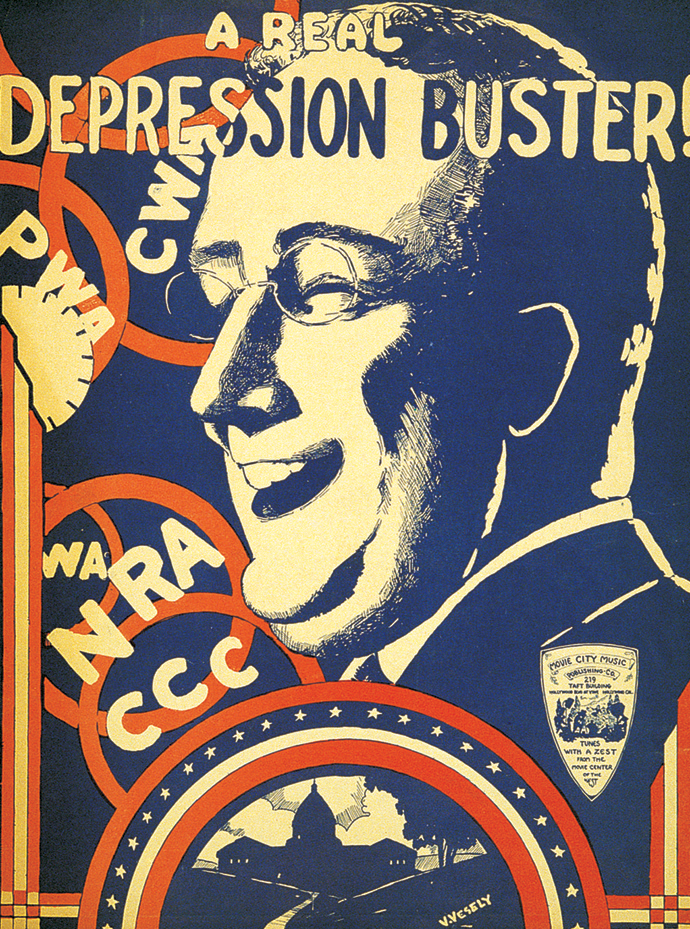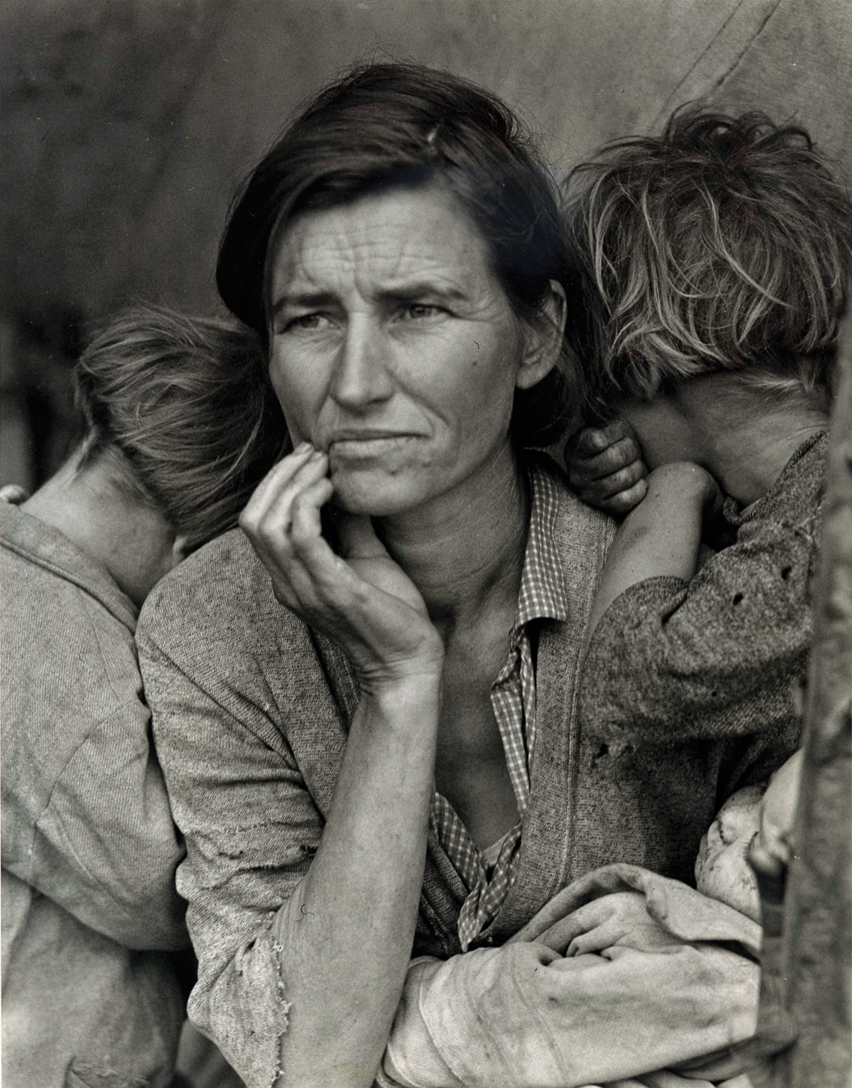The New Deal Experiment, 1932–1939

Printed Page 650 Chapter Chronology
The New Deal Experiment, 1932-1939

QUICK START
Quickly learn what is important in this chapter by doing the following:
- READ the Chapter Outline to see how the chapter is organized.
- SKIM the Chronology to see what will be covered.
When you are ready, download the Guided Reading Exercise, then read the chapter and the Essential Questions for each section and complete the Guided Reading Exercise as you go. Then use LearningCurve and the Chapter Review to check what you know.
In March 1936, Florence Owens piled her seven children into her old Hudson. They had been picking beets in southern California, near the Mexican border, but the harvest was over now. Owens headed north, where she hoped to find work picking lettuce. About halfway there, her car broke down. She coasted into a labor camp of more than two thousand migrant workers who were hungry and out of work. They had been attracted by advertisements of work in the pea fields, only to find the crop ruined by a heavy frost. Owens set up a lean-to shelter and prepared food for her family while two of her sons worked on the car. They ate half-frozen peas from the field and small birds the children killed. Owens recalled later, "I started to cook dinner for my kids, and all the little kids around the camp came in. ‘Can I have a bite? …' And they was hungry, them people was."
Florence Owens was born in 1903 in Oklahoma, then Indian Territory. Both of Florence's parents were Cherokee. When she was seventeen, Florence married Cleo Owens, a farmer who moved his growing family to California, where he worked in sawmills. Cleo died of tuberculosis in 1931, leaving Florence a widow with six young children.

Florence began to work as a farm laborer in California's Central Valley to support herself and her children. She picked cotton, earning about $2 a day. "I'd leave home before daylight and come in after dark," she explained. "We just existed!" To survive, she worked nights as a waitress, making "50-cents a day and the leftovers." Sometimes, she remembered, "I'd carry home two water buckets full" of leftovers to feed her children.
Like tens of thousands of other migrant laborers, Owens followed the crops, planting, cultivating, and harvesting as jobs opened up in the fields along the West Coast from California to Oregon and Washington. Joining Owens and other migrants — many of whom were Mexicans and Filipinos — were Okie refugees from the Dust Bowl, the large swath of Great Plains states that suffered drought, failed crops, and foreclosed mortgages during the 1930s.
Soon after Florence Owens fed her children at the pea pickers' camp, a car pulled up, and a woman with a camera got out and began to take photographs of Owens. The woman was Dorothea Lange, a photographer employed by a New Deal agency to document conditions among farmworkers in California. Lange snapped six photos of Owens and climbed back in her car and headed to Berkeley. Owens and her family, their car now repaired, drove off to look for work in the lettuce fields.
Lange's last photograph of Owens, subsequently known as Migrant Mother, became an icon of the desperation among Americans that President Franklin Roosevelt's New Deal sought to alleviate. While Migrant Mother became Dorothea Lange's most famous photograph, Florence Owens continued to work in the fields, "ragged, hungry, and broke," as a San Francisco newspaper noted.
Unlike Owens, her children, and other migrant workers, many Americans received government help from Roosevelt's New Deal initiatives to provide relief for the needy, to speed economic recovery, and to reform basic economic and governmental institutions. Roosevelt's New Deal elicited bitter opposition from critics on the right and the left, and it failed to satisfy fully its own goals of relief, recovery, and reform. But within the Democratic Party, the New Deal energized a powerful political coalition that helped millions of Americans withstand the privations of the Great Depression. In the process, the federal government became a major presence in the daily lives of most American citizens.